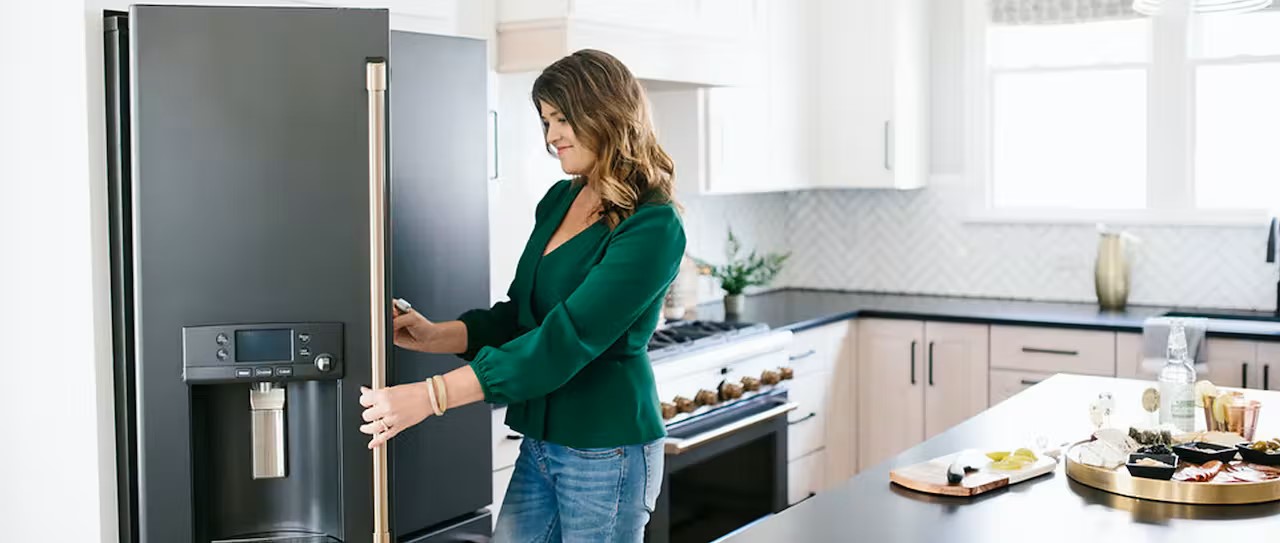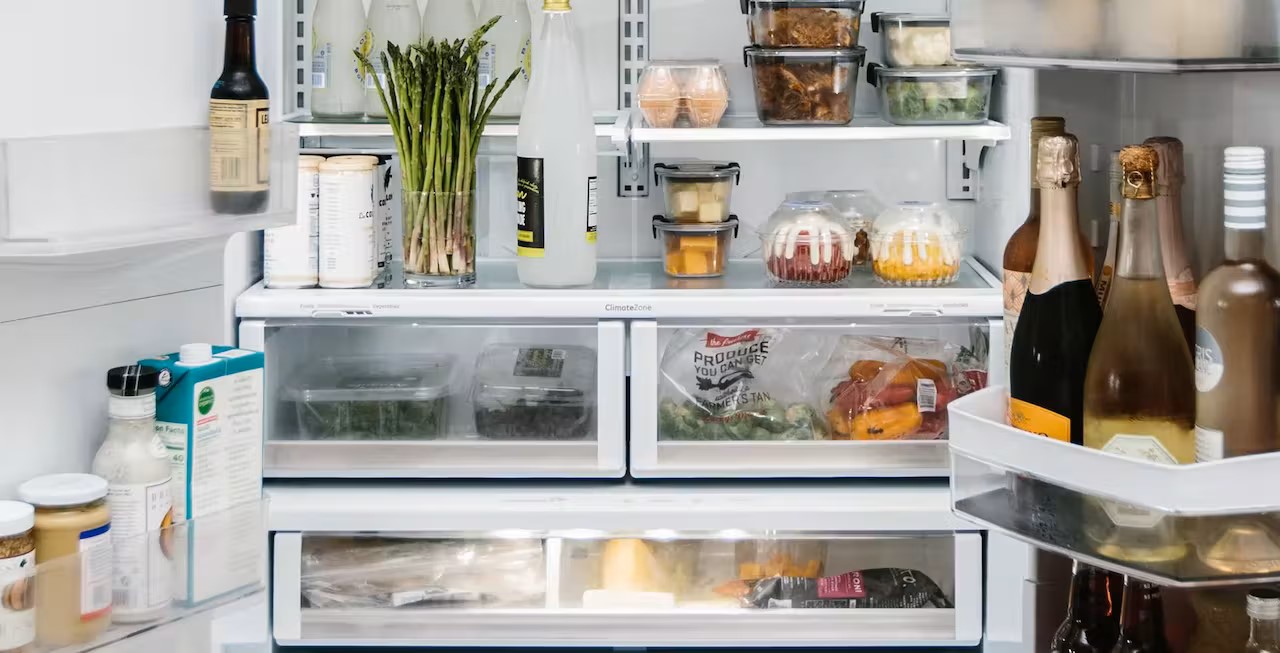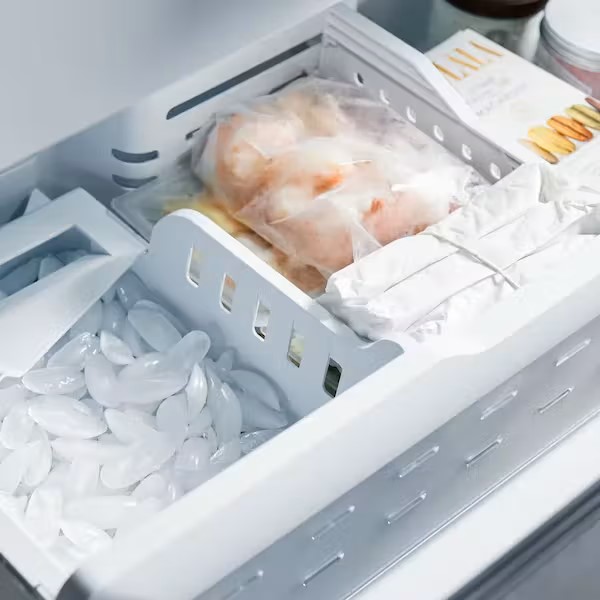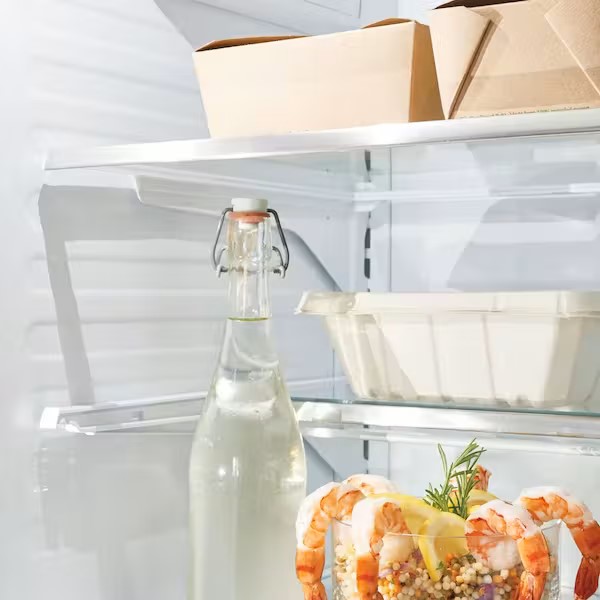Time-Saving Tips to Keep Your Refrigerator Clean and Organized
CAFÉ refrigerators are made to keep all your foods at their freshest and the way these French-door refrigerators are designed follows a certain logic. The doors open to reveal easy-to-reach shelves with bins and crispers that help your foods stay fresher longer.

Most of us have our own food organizing system: Certain shelves are configured to fit the items we buy most often, and drawers are designated to hold foods that can be stored together. But what’s the best way keep your foods organized and ready for meal prep and entertaining? We’ve come up with a list of tips for your CAFÉ refrigerator to help you stay organized and ensure your ingredients are always ready for creating culinary masterpieces, every day.

Get in the Zone
Before you start reorganizing, you should set your refrigerator temperature between 32 and 42 degrees Fahrenheit (0 and 5 degrees Celsius). Refrigerators do keep a near consistent temperature, but with slight variations from top to bottom. That’s because heat rises, some areas will obviously be colder than others. So, top shelves are slightly warmer, while bottom shelves and drawers are the coldest.
On the uppermost shelf, store ready-to-eat foods and easy-access snacks. Leftovers, prepared salads, sparkling water, and dairy products store well here. These items are accessed more often and should be kept in sealed containers. The middle shelf can also hold many similar items like cheeses in sealed containers, yogurts, kombucha, puddings, eggs and other such foods. They will keep well and stay fresher longer. Plus, they should be stored above and away from any raw meats or raw foods that could contain bacteria that could be transferred onto them through touching.
Bottom shelves are where raw meats, poultry, and seafood should be stored. This helps prevent them from dripping down onto any other foods and cross contaminating them with bacteria. That said, it’s important to be sure they stay in tightly sealed containers, so they don’t come into contact with each other or drip downward into any drawers.
Drawer Logic
Many fridges, including French-door refrigerators with bottom freezers, include a meat or deli drawer or bin. These allow temperature adjustments to keep cured meats or cheese at the right temperature and moisture level. If you have one of these, store your charcuterie essentials, like hard cheeses, salami, prosciutto, and cured sausages.
Crisper drawers are of course for storing fruits and vegetables, and most refrigerators have drawers with adjustable humidity settings. Vegetables that wilt (i.e., lettuces, greens, and cruciferous vegetables like cauliflower) need higher humidity, so set the drawer accordingly. You can also store freshly picked herbs in your humid crisper drawer, and they will stay fresher longer if you first wrap them in a damp paper towel. Fruits and veggies with skins (i.e., mushrooms, peppers, squash, avocados, and grapes) prefer a dryer air, so store them in a drawer with less humidity.
To help you see at-a-glance which crisper drawer has higher humidity, and which one is less humid, CAFÉ counter-depth French-door refrigerators have a colored LED lighting system that allows you to set a specific color for each drawer so you can easily see which drawer holds kale and which one has the red peppers.
Don’t Forget the Door
As most people already know, the refrigerator doors are best for holding items that need to be cool, but don’t require the coldest temps in the fridge. These narrow bins and shelves are perfect for items in bottles and other similar sized containers. Store products like condiments, butter, water, and any cooking oils or salad dressings here.
For even better control of your fridge’s temperatures, CAFÉ refrigerators with WiFi Connect will notify your smartphone if the refrigerator door has been open too long or if it has been left ajar.


Freezer Tips
With a bottom-drawer freezer found on many French-door refrigerators, it can be difficult to keep your foods organized. It’s best to make sure that foods that you access less often are put on the bottom and in the back of the drawer area. Anything that you know you’ll need to reach for soon or often (i.e., ice cream or smoothie supplies), place on top and near the front. If you’re freezing fruits, herbs, vegetables, or meals, don’t forget to label and date them so there’s no question when you reach in to grab them at a later date.
